Internet shutdown in Swat continues for fourth week as militants make presence felt
Internet services have either been unavailable or extremely patchy in parts of Swat – particularly in the sub-districts (or tehsils) of Matta, Kabal and Khwazakhela – for the last month. This disruption isn’t limited to PTCL, the broadband service in the area, as 3g and 4g services available through cellular networks are also down.
The Pakistan Telecommunication Authority (PTA) says internet service in areas of Swat has been shut down due to operational requirements pertaining to national security. “Service is closed till further orders,” the spokesperson informed Aaj Digital.
This means over a million people could be without internet, considering the populations of the various sub-districts according to the 2017 census. Tehsil Matta has around 500,000 people, in Khwazakhela there are 265,000 residents, in Kabal 420,000, and 126,000 in tehsil Charbagh.
This lends credence to the claim by locals that there has been militant activity in parts of Swat, particularly in the mountainous areas of Matta, Kabal and Khawazakhela. There have been unconfirmed sightings of armed men near the markets and towns of major cities. This was reported all the way from the mountainous forests of Dir bordering Afghanistan to the highlands of Swat.
Aaj Digital tried to contact Chief Minister Mahmood Khan about the situation, particularly in his ancestral town Matta. Two questions were sent to his personal assistant Mr Shahid: a) Is the chief minister aware of the internet issue in his hometown, and b) when was the last time he visited the area. There was neither acknowledgement nor response to the query.
However, Dr Haider Ali Khan, the MNA from Khawazakhela, confirmed that the internet was not working in his area as well as other sub-districts in Swat but he said it was due to the floods, “which destroyed almost everything in the flood-hit areas including electricity and mobile phone towers along with other infrastructure like roads, bridges, houses, etc.”
He said he remained unaware of any such decisions for security reasons. When asked about reports that business and land owners were quietly leaving the area due to extortion demands by militants, he said he had heard stories but no one from his constituency had reported it to him.
Aaj Digital contacted several hotels in the area, pretending to be a potential guest to inquire about internet availability. Three receptionists said that the internet had indeed been shut off for the last 15 to 20 days.
In conversations with locals and area journalists, Aaj Digital learnt that public representatives have been staying away from their constituencies.
Aaj Digital tried unsuccessfully to contact Swat Deputy Commissioner Junaid Khan and District Police Officer Zafar Marwat.
Militant manoeuvres
The first alarm about the possible presence of militants was raised almost three months ago. But then in August armed men brazenly abducted law enforcers, including a high-ranking police officer. Videos shared on social media claimed that the hostages included an army officer -– a claim not confirmed by the Pakistan army.
At that time, there were no confirmation of numbers with estimates varying from as little as a few dozen to over a thousand men. The issue was brought up in the National Assembly after it was raised by North Waziristan lawmaker Mohsin Dawar. At the same time, there were vociferous protests by Swat’s people, who came out on the streets. Statements were issued by political parties, including one by Awami Workers Party leader Aimal Wali, claiming that even PTI lawmakers had paid extortion to militants.

On August 14, the Inter-Services Public Relations issued a statement dismissing reports of the presence of militants as “grossly exaggerated and misleading”.
Meanwhile, sporadic and targeted attacks continued, including on military convoys and check posts. This included an attack on a PTI provincial lawmaker Malik Liaquat Ali in Dir, in which four people were killed. In a statement attributed to the banned Tehreek-e-Taliban Pakistan, the militant group denied responsibility for the attack. It instead said that it was adhering to the ceasefire with Pakistan that was achieved after talks taking place under the aegis of the Afghan Taliban. ““However, [the TTP] reserves the right to defend itself against action by the army or police,” it added. “Any action taken by TTP personnel has been to defend themselves.”
There has been no official statement other than confirmation of the ceasefire a few months ago, but insiders say talks have reached an impasse. They cite it as one of the reasons for the sustained number of attacks in September, including those in which members of the anti-Taliban Aman Committee were targeted and killed. It included Idris Khan, known for his strong opposition to the Taliban during their last reign of terror that started around 2007 and was rooted out after the launch of the National Action Plan in 2014. The NAP was launched following the barbaric attack on schoolchildren of the Army Public School in Peshawar that claimed at least 148 lives.
Muhammad Irfan, currently pursuing a PhD in Ireland, is a journalist and researcher who covered conflict zones for almost a decade. While his latest efforts focus on recruitment strategies used by militants groups, he has strong ties on the ground in the Khyber Pahtunkhwa, including the now-merged tribal areas. According to his information, these ‘freshly arrived’ militants are actually natives of the area who were living in Afghanistan’s Kunar and Nanganhar.
Muhammad Irfan says that it was the attacks targeting peace committee members and ransom calls that have triggered the exodus of affluent and influential families from the area, including current and former members of the peace committee.
Irfan adds that the situation still remains in a flux as those present in the mountains in Swat are lower-level commanders who are splintered into small groups and operating on particular territories.
“They don’t have a holistic leader. This is why they are staying in areas with small pockets of population,” he said. “They have presence in Matta’s Chuprial and Karnal, crossing over into Malam Jabba’s Shal Kohsar.”
Irfan says he expects the situation to change drastically if and when the possibility of the arrival of senior militant leadership surfaces. The problem, he says, is that militants claim they have returned following an agreement with the State. The government has denied that any such arrangement has taken place. Locals, including public office holders, add that they are unaware of any such agreement.
Security response
The armed forces have remained tight-lipped on the issue. Locals have said, however, that there has been an increase in deployment, especially in the foothills of Matta’s Balasur.
Another local expert, who spoke to Aaj Digital on condition of anonymity given the risks of being on the ground, said that one of the reasons internet services were shut off was to stop militants communicating using SIM cards issued in Afghanistan.
They said that there was speculation regarding change of strategy in dealing with militancy. One argument cited for this theory was the transfer of General Faiz Hameed, who was Corps Commander Peshawar and oversaw negotiations with the TTP in Kabul.
Aaj Digital contacted the ISPR about the security situation in Swat and disruption of internet services. Once the reply is received, it will be added to the story.
Public anger
The suspected presence of militants has caused the people of Swat and other areas to hold protests, with a major demonstration in Matta on Friday.
The common feeling was that Swat has changed since 2007, when militants were able to entrench themselves. Back then, the Taliban found favour – either through coercion or their own brand of justice - with the local people by settling disputes, including those of land.
“We will no longer be deceived by fake slogans,” a local leader of the PPP said, while demonstrators demanded security agencies clarify the situation regarding talks with militants.
“They are also telling the Taliban openly that they are no longer welcome or acceptable,” said Irfan about the recent wave of protests. “Previously people were afraid. Now they are angry. They do not want to become internally displaced people (IDPs) again.” More than 600,000 residents became IDPs during Swat’s last brush with militancy over a decade ago.

Irfan says locals are tired of being held hostage by ransom demands as the area deals with devastating floods and inflation.
There is anger over the disruption of services that have cut locals off from relatives across Pakistan and abroad.
“The biggest change from previous times is in terms of fear. Now, there is no longer any tolerance for the Taliban.”
The people are equally upset with the government departments and law enforcers, saying they had failed to ensure the security and safety of the citizens of the area.
What next?
Muhammad Irfan says the next two months could prove crucial for the people of Swat. He predicted three possible outcomes for the current situation.
The first would be that the State could engage in backdoor talks, asking the men to return.
The second outcome could be that the State tells militants to stay in their homes and villages, give up their weapons, and sign up for de-radicalisation.
The third and most feared outcome would be another guerrilla war that engulfed the scenic valley after 2007, after which attacks and explosions became a daily affair.
Peace talks
The following is an outline of the demands of each party and the points on which issues consensus had been achieved in June. There has been no update since.
TTP demands:
- Release all TTP prisoners held in Pakistani prisons or in custody of Pakistan forces.
- Army to exit the tribal districts formerly known as FATA
- Compensation for losses incurred by residents of the recently merged tribal districts
- Removing TTP from the terrorism blacklist
- Ending restrictions on the movement of TTP members in the country
- Implementation of agreement between the tribes and the Quaid-e-Azam
- Setting up of political offices in other countries.
- Nizam-e-Adl regulation in Malakand
Government of Pakistan demands:
- TTP must swear allegiance to the Constitution
- Countrywide ceasefire
- TTP to stop working with other militant groups.
- TTP members to only keep licensed firearm in line with country’s laws. No one will be allowed to bear unlicensed firearms
- Dissolution of TTP’s organizational structure
- TTP members to lead lives like other ordinary citizens
Points on which consensus has been achieved:
- The presence of FC [Frontier Corps] on the border will be 60% while the army presence will be reduced to 40%
- Frontier Corps to be deployed at all check posts
- Remaining contingent of Pak army to return to barracks
- Remaining forces of army to confine itself to its own existing cantonments. FC to occupy cantonments belonging to it
- Army cannot establish new cantonments. This restriction isn’t applicable to the FC Three member mediation committee to be established to compile and catalogue this work
- Mediation committee to try to resolve contentious issues failing which it would be sent to the central leadership committee
- Fifteen-day deadline given for talks to reach their logical conclusion. The two parties have also agreed to a 15-day ceasefire.
- The duration of the talks and ceasefire to be revisited after the deadline lapses
- A period of three months agreed upon for the implementation of the agreement
- Action to be taken concurrently on all aspects of the agreement. As part of efforts to improve bilateral ties, some members of the TTP will return to Pakistan.
[Anjum Ayaz from Swat and the Peshawar Bureau contributed to this report.]
For the latest news, follow us on Twitter @Aaj_Urdu. We are also on Facebook, Instagram and YouTube.



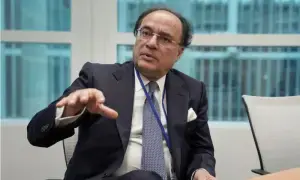

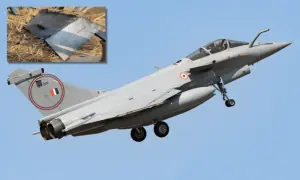




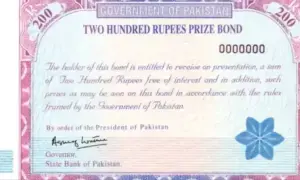
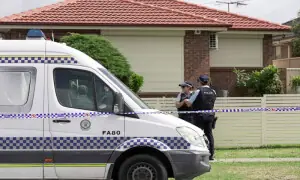
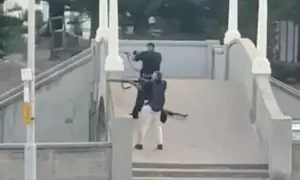


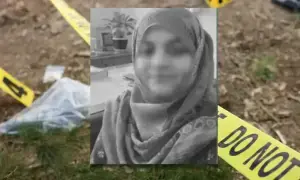
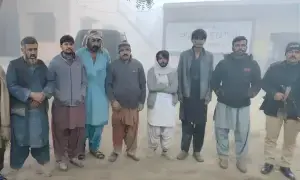

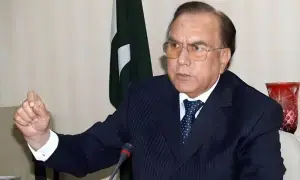
Comments are closed on this story.